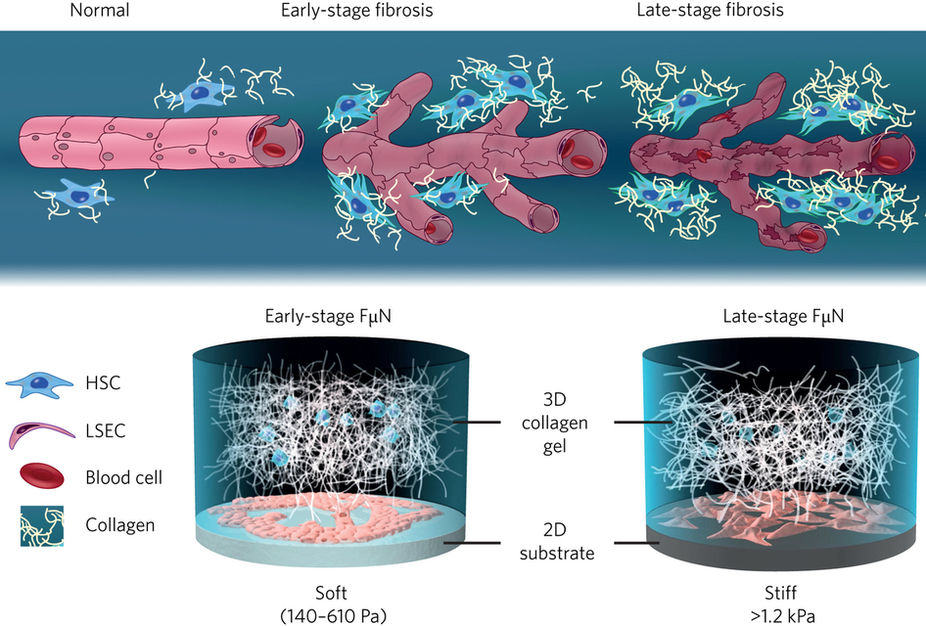2017-10-19
Our paper "Mechanotransduction-modulated fibrotic microniches reveal the contribution of angiogenesis in liver fibrosis" has been accpepted by Nature Materials. Congratulations to the authors!

The role of pathological angiogenesis on liver fibrogenesis is still unknown. Here, we developed fibrotic microniches (FμNs) that recapitulate the interaction of liver sinusoid endothelial cells (LSECs) and hepatic stellate cells (HSCs). We investigated how the mechanical properties of their substrates affect the formation of capillary-like structures and how they relate to the progression of angiogenesis during liver fibrosis. Differences in cell response in the FμNs were synonymous of the early and late stages of liver fibrosis. The stiffness of the early-stage FμNs was significantly elevated due to condensation of collagen fibrils induced by angiogenesis, and led to activation of HSCs by LSECs. We utilized these FμNs to understand the response to anti-angiogenic drugs, and it was evident that these drugs were effective only for early-stage liver fibrosis in vitro and in an in vivo mouse model of liver fibrosis. Late-stage liver fibrosis was not reversed following treatment with anti-angiogenic drugs but rather with inhibitors of collagen condensation. Our work reveals stage-specific angiogenesis-induced liver fibrogenesis via a previously unrevealed mechanotransduction mechanism which may offer precise intervention strategies targeting stage-specific disease progression.

